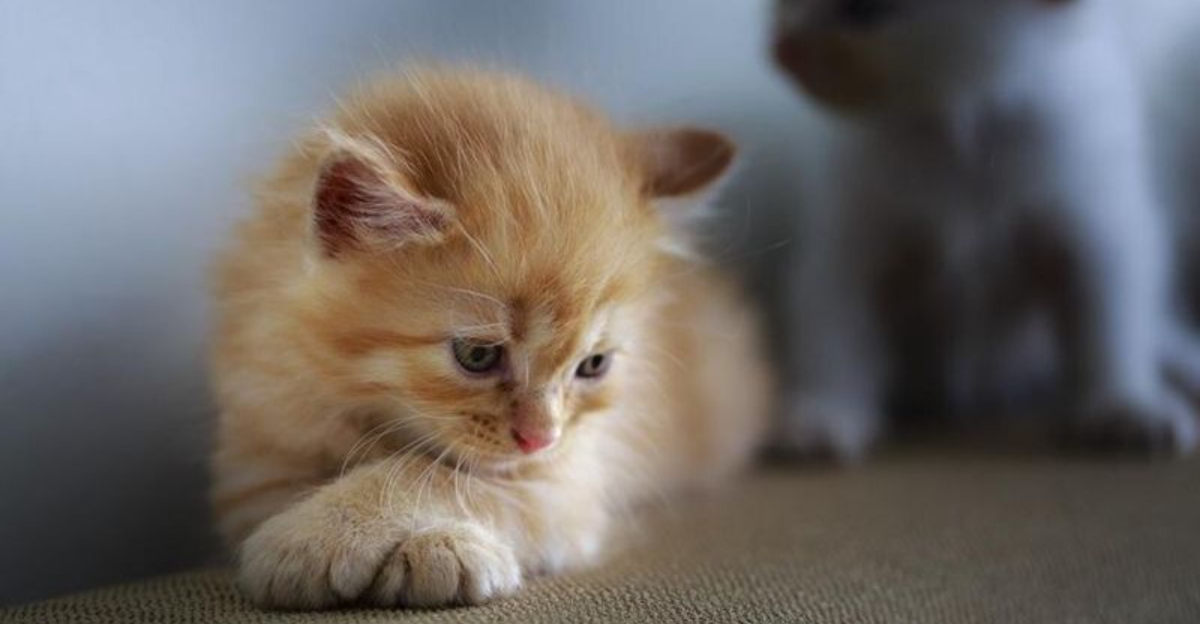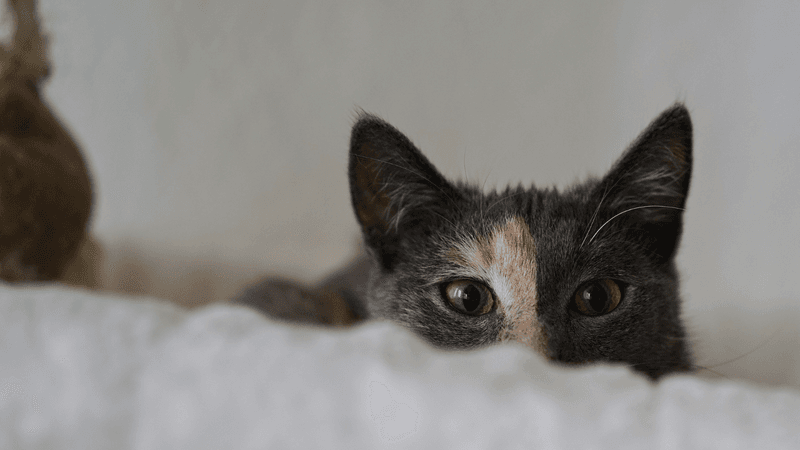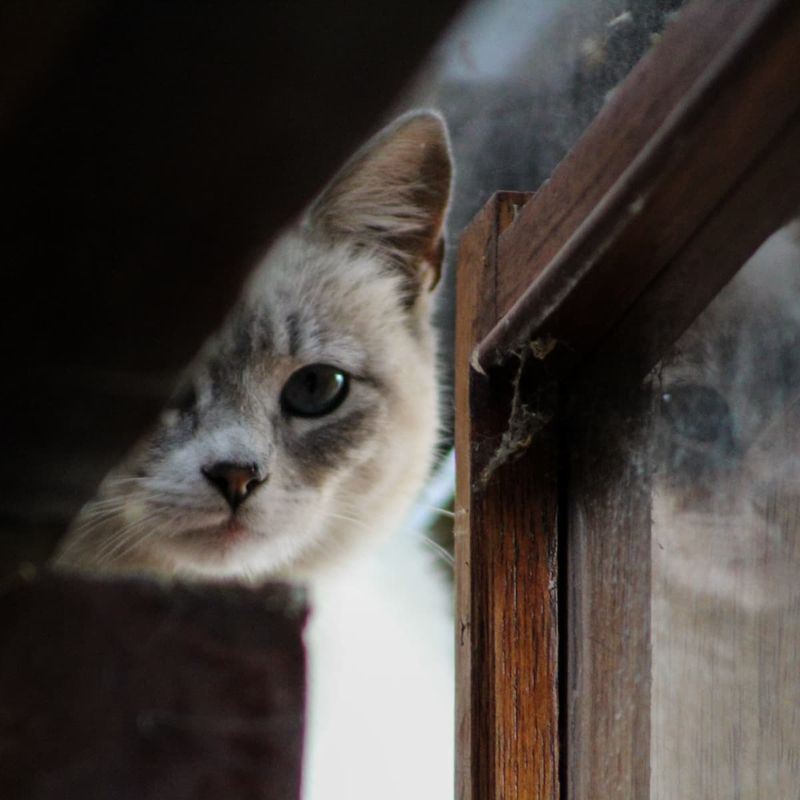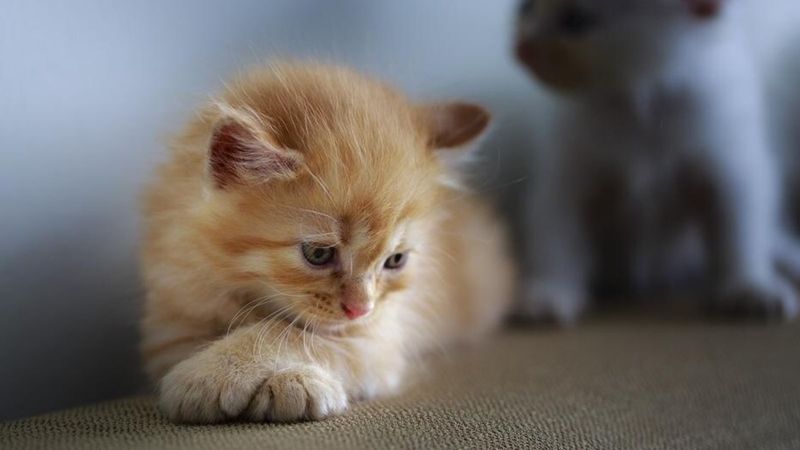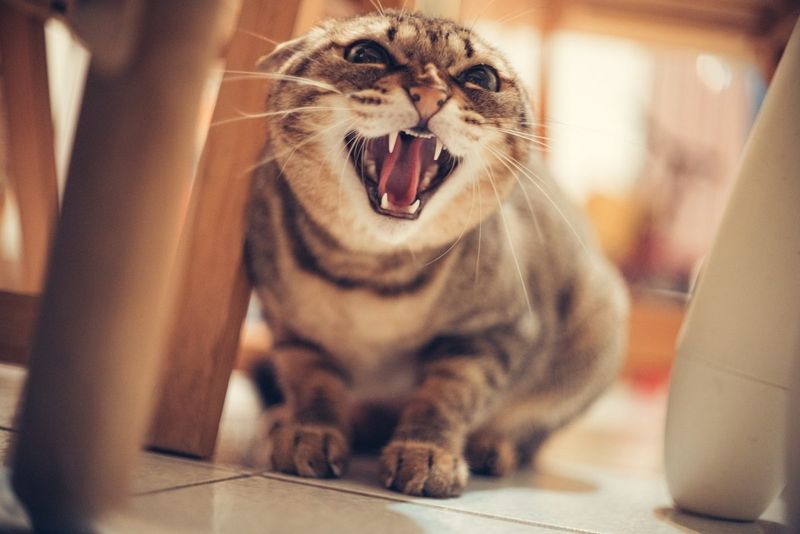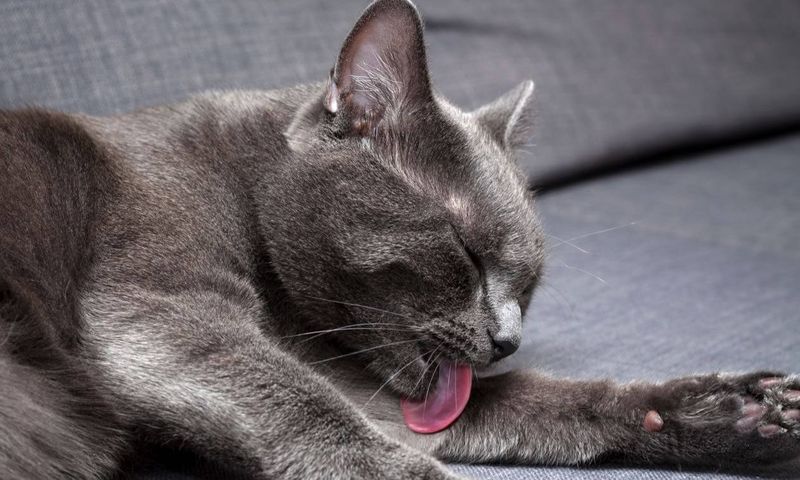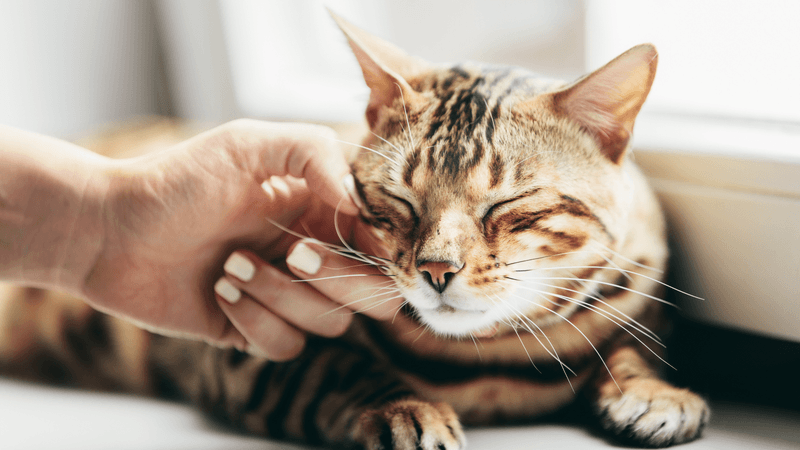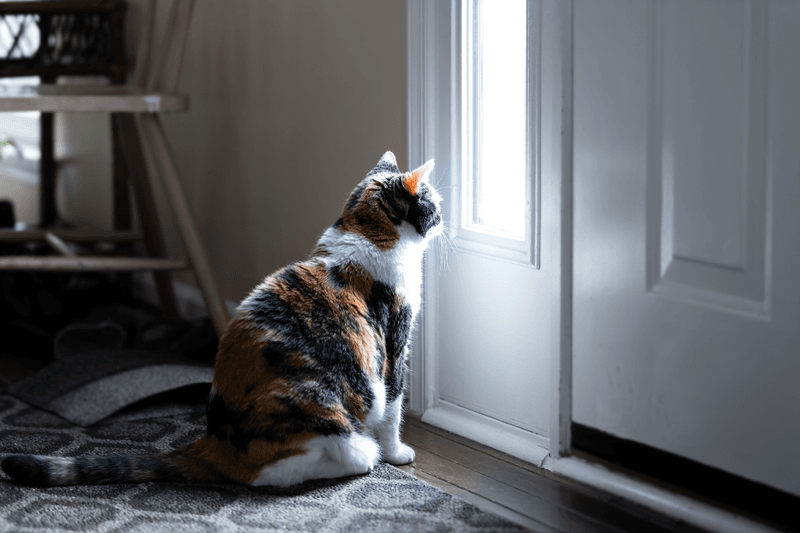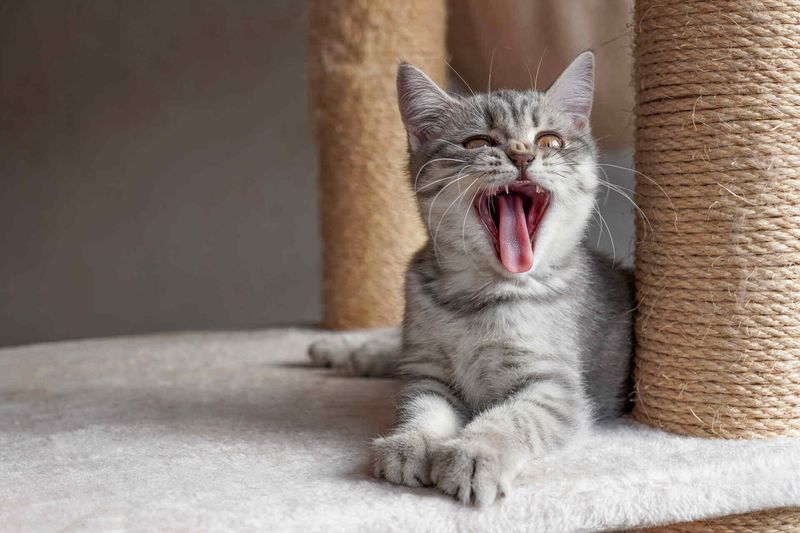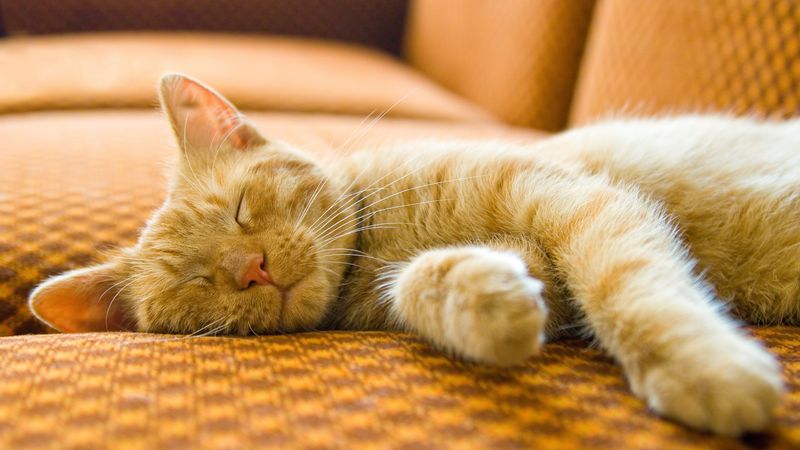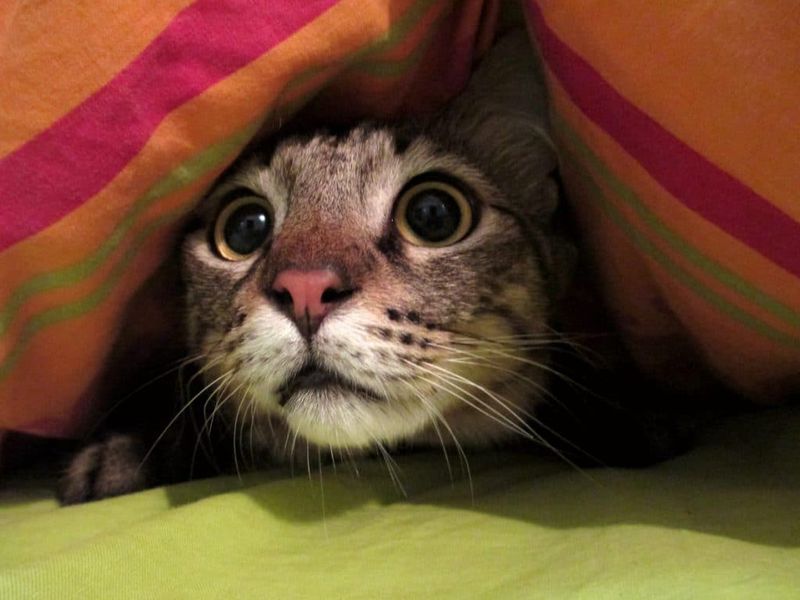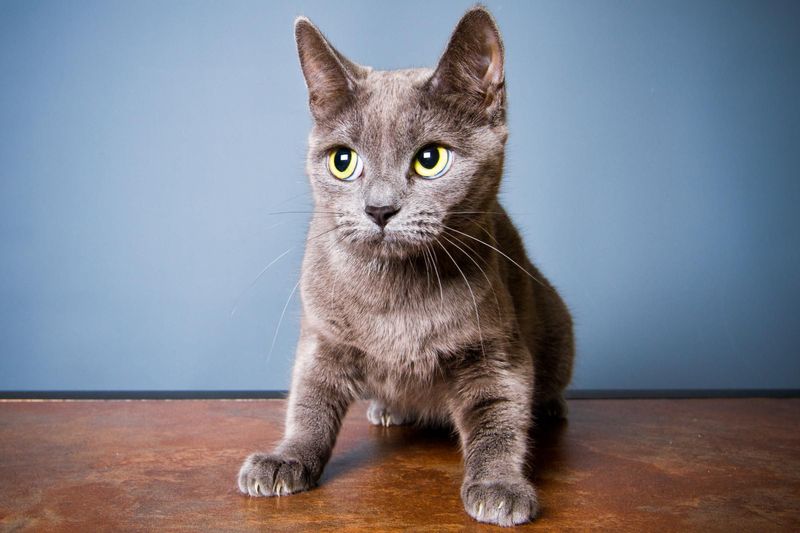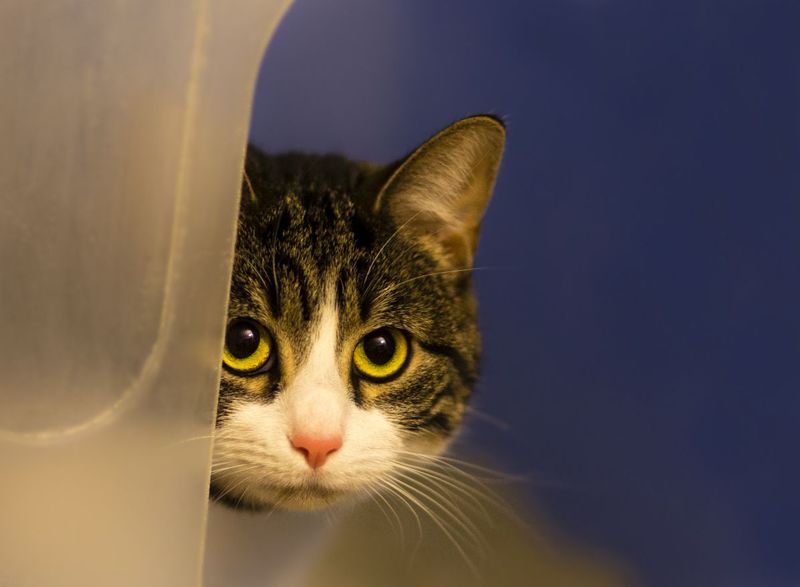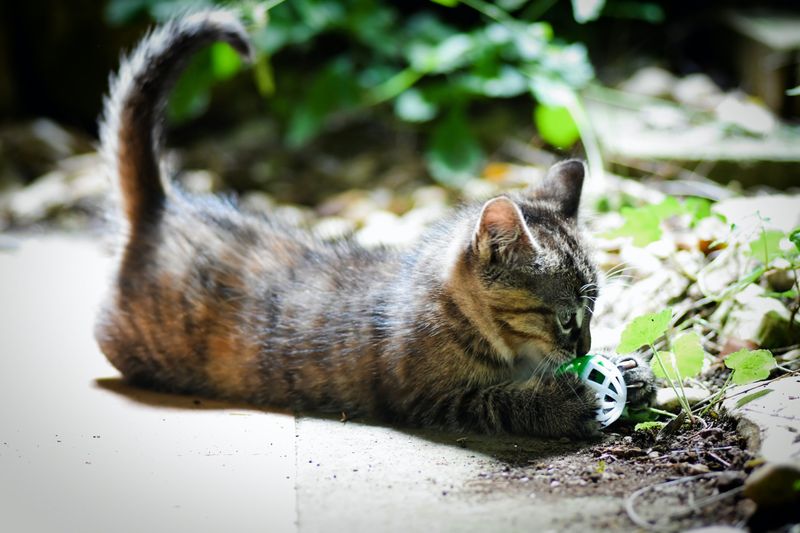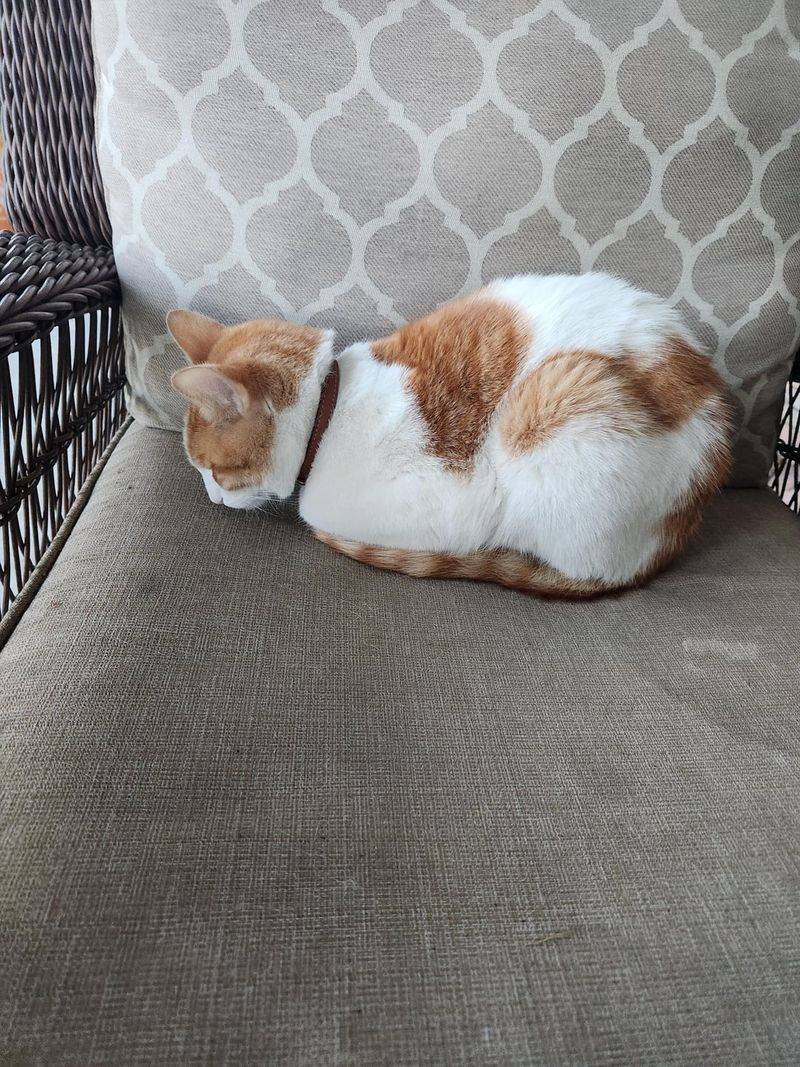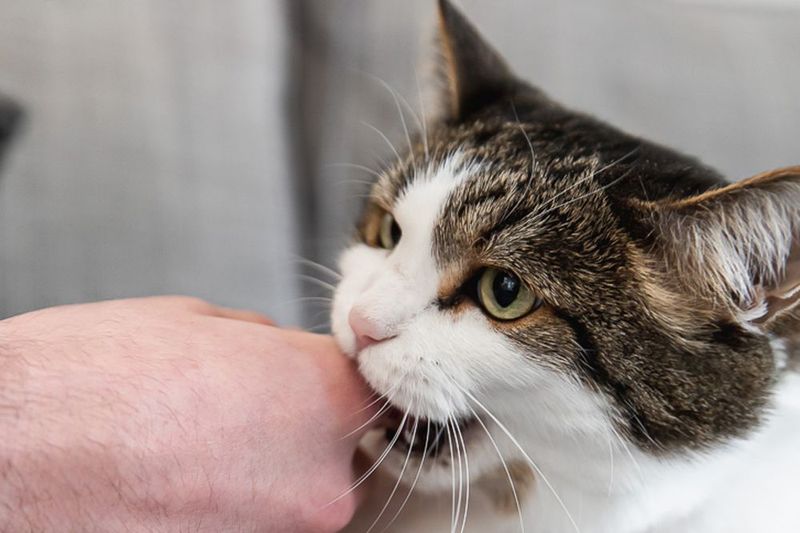📖 Table of Content:
- 1. Avoids Eye Contact
- 2. Hiding Constantly
- 3. Not Interacting with Other Pets
- 4. Aggression Towards Guests
- 5. Over-Grooming
- 6. Lack of Purring
- 7. Refusing Treats from Strangers
- 8. Disinterest in Playtime
- 9. Unusual Vocalizations
- 10. Avoiding Litter Box
- 11. Sleeping Alone
- 12. Fear of Being Touched
- 13. Ignoring Call or Name
- 14. Reluctance to Enter New Spaces
- 15. Chasing Own Tail
- 16. Stiff or Rigid Body Language
- 17. Excessive Licking or Biting During Interactions
Cats, like humans, possess their own unique set of social skills that enable them to navigate their world and engage with others. However, not all cats are naturally adept at these interactions, and some may find it difficult to bond with their environment or companions. Understanding the signs of social struggles can be the first step toward improving their behavior and overall well-being.
Some cats may struggle with socialization due to past experiences, temperament, or simply lack of exposure to various social situations. These challenges can manifest in different ways, from avoiding contact with humans to struggling with other pets. Early recognition and intervention are key to helping them adapt and build stronger relationships.
Addressing social challenges in cats often requires patience, consistency, and a gentle approach. By observing their behavior and offering appropriate guidance, it’s possible to help them become more confident and comfortable in social settings. The following signs can help identify when a cat needs extra support, along with strategies to encourage positive social development.
1. Avoids Eye Contact
If your cat consistently avoids eye contact, it might signal discomfort around others. Cats use eye contact as a form of communication, and avoiding it can indicate shyness or fear.
To improve this, create a safe space for your cat. Spend time sitting quietly nearby, allowing them to approach on their own terms.
Use slow blinking to show trust, as this is a friendly gesture in feline communication. Over time, your cat may become more comfortable and start to reciprocate eye contact. This gradual process requires patience and understanding.
2. Hiding Constantly
Cats that hide frequently may be feeling anxious or overwhelmed. This behavior often occurs when there is an unsettling change in their environment or they feel threatened.
To help, provide hiding spots that are both safe and easily accessible. Engage them with interactive toys that encourage exploration.
Gradually expose them to new experiences in a controlled manner. Ensuring they have a calm environment where they can retreat without disturbance is crucial for building confidence.
3. Not Interacting with Other Pets
When a cat isolates itself from other pets, it might be struggling with social anxiety. This behavior can lead to feelings of loneliness and heightened stress.
Encouraging interaction through supervised play can help. Start with short sessions and use toys that require cooperation.
Ensure all pets have their own space to prevent territorial disputes. With time, your cat may start to engage more with their furry companions, fostering a sense of belonging.
4. Aggression Towards Guests
Fear or insecurity can cause a cat to become aggressive toward guests. The presence of strangers may be interpreted as a danger, causing your cat to hiss or swat in defense.
Introduce guests slowly, allowing your cat to observe from a distance first. Encourage guests to offer treats or toys.
Positive reinforcement for calm behavior can gradually reduce aggression. It’s important to respect your cat’s boundaries and never force interactions.
5. Over-Grooming
When a cat grooms too much, it’s often a response to stress or anxiety. This can result in hair loss or inflamed, irritated areas on the skin.
To address this, identify any changes in the environment that could be causing stress. Providing mental stimulation with puzzle toys can help distract from this behavior.
Consulting a vet to rule out medical issues is also wise. Creating a calm, enriched environment will support your cat’s emotional well-being.
6. Lack of Purring
If your cat seldom purrs, it might indicate discomfort or stress. Purring is often associated with contentment, but its absence doesn’t always mean unhappiness.
Observe your cat’s body language for other signs of distress. Providing a routine and predictable environment can help.
Engage in activities that your cat enjoys, reinforcing positive experiences. With patience, they may begin to purr more often, expressing their comfort.
7. Refusing Treats from Strangers
Turning down treats from strangers is a classic cat move to express distrust or anxiety. With food being a form of trust, a cat may hold back until they’re more comfortable. Their natural wariness kicks in when unfamiliar faces are involved, especially during mealtime.
Allow your cat to initiate contact with newcomers, and encourage the stranger to sit quietly and let the cat approach.
Offering treats from a distance can gradually build trust. Always ensure the process is gentle and stress-free to foster positive associations.
8. Disinterest in Playtime
A lack of interest in playtime might suggest boredom or depression. Play is essential for a cat’s mental and physical health.
Try different types of toys to see what interests your cat. Rotate them regularly to maintain novelty and engagement.
Interactive play sessions can rekindle their interest, providing both stimulation and bonding opportunities. Pay attention to your cat’s preferences and energy levels.
9. Unusual Vocalizations
A sudden increase in meowing or yowling could indicate that a cat is trying to communicate an underlying need, like attention or social discomfort. Cats rely on their voices to express themselves, and unexpected vocal changes can often be a cry for help.
Monitor when and where these vocalizations occur to identify triggers. Providing consistent attention and routines can alleviate anxiety.
If the behavior persists, consulting with a vet can rule out medical concerns, ensuring your cat’s comfort and happiness.
10. Avoiding Litter Box
If the litter box suddenly becomes a no-go zone, your cat may be expressing stress or unease. It could be triggered by anything from a shift in their social circle to a change in their environment.
Ensure the litter box is clean and in a quiet location, free from disturbances. Providing multiple boxes in a multi-pet household can prevent territorial disputes.
Observe your cat’s behavior to identify any specific stressors and adjust their environment accordingly. Consulting a vet for persistent issues is beneficial.
11. Sleeping Alone
Cats that prefer sleeping alone might be struggling with social skills or feeling insecure. While some solitude is normal, constant isolation can be a concern.
Encourage companionship by placing comfortable bedding near social areas. Reward calm interactions with treats or gentle petting.
Building a trusting relationship through regular, positive interactions can help your cat feel more secure and less isolated.
12. Fear of Being Touched
If your cat flinches or pulls away when touched, it may be a sign of lingering fear or past trauma. Social anxiety can leave its mark, and rebuilding trust takes gradual, patient effort. They just need time to learn that touch isn’t a threat.
Gradual, gentle handling combined with positive reinforcement can build trust. Allow your cat to set the pace for physical contact.
Using calming pheromones or sprays can also help ease anxiety, creating a more comfortable environment.
13. Ignoring Call or Name
If your cat doesn’t respond to its name, it might be a sign of social disconnection or a lack of interest. Stress or boredom could be the culprit, leaving them unmotivated to engage. Cats, like people, need the right kind of connection to respond.
Use a positive tone and reward responsiveness with treats or play. Building a connection through consistent, positive interactions can encourage engagement.
Understanding your cat’s preferences and respecting their boundaries is key to overcoming this behavior.
14. Reluctance to Enter New Spaces
Hesitation to explore can be a telltale sign that your cat is feeling insecure or afraid. Cats are creatures of habit and may feel exposed to unknown environments.
Encourage exploration by allowing them to enter at their own pace. Place favorite toys or treats inside to make the space inviting.
Create a sense of safety by providing hidey holes or elevated spots. With patience, your cat will likely become more confident in exploring new areas.
15. Chasing Own Tail
Tail chasing is often seen as playful, but excessive behavior can indicate stress or lack of social skills. It may be a sign of self-soothing in uncomfortable situations.
Ensure your cat has ample opportunities for interactive play. Redirect their energy with engaging toys and activities.
Observing any patterns or triggers for this behavior can help address underlying issues. Consistent engagement is key to preventing this behavior.
16. Stiff or Rigid Body Language
Your cat’s body language speaks volumes. If you notice a stiff or rigid posture, it could be a sign that your feline friend is struggling socially.
Cats may arch their backs, keep their tails straight, or tense their muscles when they feel uncomfortable. This behavior might signal anxiety or fear, especially in social situations.
To help your cat relax, provide a calm environment and let them approach at their own pace. Offer treats and gentle petting as encouragement. With time and patience, your cat’s body language may soften, reflecting improved social confidence.
17. Excessive Licking or Biting During Interactions
Does your cat lick or bite excessively during interactions? This behavior could indicate social distress. Excessive licking can lead to bald patches or skin irritation, highlighting the issue.
Try to identify any triggers, like loud noises or unfamiliar visitors, that might be causing your cat’s stress. Providing a safe space and interactive toys can help redirect your cat’s focus.
Gradually, these measures can reduce excessive grooming, fostering a more balanced social behavior.
